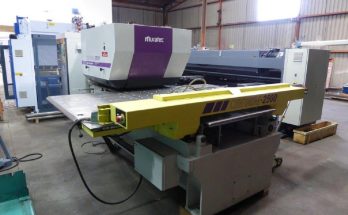A point-of-sale (POS) system is an important part of any business. It’s the system that handles transactions and keeps track of what’s been sold. This system comes in different types and packages, but all have the same goal: to make transactions as quick and efficient as possible.
Point of sales systems can be optimise to make it as efficient as possible. By making a few changes, you can streamline your POS system and make it work even better for your business.
Keep your system up-to-date.
One of the best ways to ensure that your Point of sales system is running as efficiently as possible is to keep it up-to-date. This means regularly installing updates and patches as they become available.
By doing this, you can take advantage of new features and fixes that can help improve performance and stability. In addition, keeping your system up-to-date can also help protect it against security threats.
Streamline your product catalogue.
Another way to optimise your POS system for greater efficiency is to streamline your product catalogue. This means reducing the number of products you offer, as well as organising them in a way that is easy for customers to navigate.
Not only can this help improve customer satisfaction, but it can also help speed up the checkout process.
Use customer data to your advantage.
One of the benefits of using a POS system is that it allows you to collect and track customer data.
This data can be used to improve your marketing efforts, as well as to better understand what products and services your customers are interested in. By using this data, you can make more informed decisions about how to run your business.
Automate where possible.
Automating certain tasks can help improve the efficiency of your POS system. For example, you can automate the process of sending receipts to customers or setting up customer loyalty programs.
By automating these and other tasks, you can free up time that can be better spent on other aspects of your business.
Offer multiple payment options.
Another way to optimise your POS system is to offer multiple payment options. This includes accepting credit cards, debit cards, and even mobile payments.
By offering multiple payment options, you can make it easier for customers to pay for their purchases. In addition, this can also help you reduce the risk of chargebacks.
Integrate with other systems.
Integrating your POS system with other business systems can also help improve efficiency.
For example, you can integrate your POS system with your accounting software. This can help save time by eliminating the need to manually enter data into multiple systems. In addition, it can also help improve accuracy by reducing the chances of data entry errors.
Prioritise security.
Finally, it is important to prioritise security when using a POS system. This means ensuring that your system is compliant with all relevant security standards.
In addition, you should also consider using encryption to protect sensitive data. By taking these steps, you can help reduce the risk of data breaches and other security threats.
Use a customer loyalty program.
A customer loyalty program can be a great way to improve efficiency and increase sales.
These programs allow customers to accumulate points for every purchase they make. The customers can then use these points to get discounts on future purchases. This means customers are more likely to return, and you’ll see an increase in sales.
Takeaway
Implementing just one or two of these tips can have a big impact on your business. By making your POS system more efficient, you can speed up transactions, reduce errors, and improve customer service. When customers have a positive experience, they’re more likely to come back and shop with you again.




